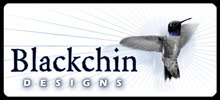
A Roseate Spoonbill near Merritt Island
Popular wisdom says the world is getting more homogenized by the moment: regional differences in speech, food, and architecture are fading away, and one place in the developed world is pretty much like any other.
But birds tell another story. Merritt Island is only a two-hour drive from Gainesville, yet the landscape and birds are noticeably different. In the real world, little distances mean a lot.
Gainesville, I discovered soon after moving here, has more in common bird-wise with the temperate zones of the American Southeast than with the tropical environment of southern Florida. We don't get flamingos or Snail Kites (or only do so rarely), but backyard woodland birds common here—such as Tufted Titmice—are apparently rare south of Orlando. So our short trip ever-so-slightly to the south gave us taste of what blingy, tropical South Florida is supposed to look like.
On our third day on the Space Coast, we got up (again) at the crack of dawn to spend the morning birding with Glenn's friend Harry. Our trip yielded a large number of Roseate Spoonbills—a prototypical big pretty Florida bird that rarely occurs in Gainesville. (Oddly enough, this WASN"T a lifer for us—a wayward Spoonbill somehow made its way to Orange County (CA) last year.)
Egrets were nesting everywhere, and we saw lots of babies, such as these tiny Great Egrets (the ultimate oxymoron):

Before Harry left us the end of our morning foray, he suggested that we check out the Orlando Wetlands Park if we were up for more birding in the afternoon. As usual, his judgement was impeccable: when we arrived there, we encountered another carful of birders on their way out. They told us happily that they had just gotten 63 species.
Cool!
The Orlando Wetlands (like the Viera Wetlands and my hometown birding touchstone, the San Joaquin Wildlife Sanctuary back in southern Califoirnia), is a series of ponds intended to filter water before its re-entry and use in civic water systems. Unlike Viera, the Orlando Wetlands wasn't filled with photographers (though it holds just as many photo-worthy treasures). And unlike San Joaquin, it WAS filled with signs warning visitors to stay away from the resident alligators.
But like both of these places, the Orlando Wetlands was filled with nice surprises. A bird I had been trying to get since moving to Florida—and that had up to now eluded me—was the Purple Gallinule. (The closest I've come so far has been running into really old people who still refer to Comnon Moorhens as "Gallinules", which drives me nuts.) Several people have insisted that these could be found (in certain seasons) in Gainesville, but I have yet to see one there. But today we got lucky again, and I got my fourth lifer of our trip!

We also got good views of Bald Eagles hunting, as well as a Wood Stork (a lifer for Glenn), and both American and Least Bitterns. We also had the only-in-Florida experience of encountering an alligator (about 5 feet long) basking on the edge of the path in front of us. (The path was a raised berm separating two of the bird-filled filtration ponds.) The gator seemed to be asleep, but we debated whether or not to work our way discreetly past it, or turn around. In the end we decided to forge ahead, with Glenn wielding his tripod as a potential deterrent.
And the gator slept peacefully through our passage. We wouldn't make very good eating anyways.























